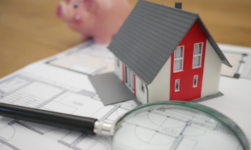
Property condition assessment is a common term when it comes to the purchase of a commercial property. Many people think of it as a checkbox to be marked and a form to be filled. However, most are unaware of its meaning, procedure, importance, and purpose. In simple words, Property condition assessment (PCA) is similar to a home inspection before buying it but is just commercial. It offers the lender and buyer risk mitigation and a chance to renegotiate the pricing based on accurate conditions of the property. Let’s get to know what PCA means in detail and what checklist ensures the best result out of it.
What Is Included In The Property Condition Assessment?
PCA is also referred to as “ Baseline Property Condition Assessment” and involves the thorough review of every improvement on the property. The site under evaluation includes the building, landscaping, parking lot, outbuildings, utilities, signage, and roads. By following all the ASTM standards, an assessment of all these components is conducted. If they are found to be in poor condition, the same is reported with the estimated cost of correcting the deficiencies. However, property condition assessment will not include any destructive testing such as breaking down walls to find any water obtrusion. It also does not entertain any assessment of upcoming future maintenance or repairs and any investigation involving climbing scaffolds.
Can One Go Beyond The Baseline PCA?
Many buyers go beyond the necessary assessment or due diligence to understand the future maintenance and repair costs of ownership. There are two types of evaluation explained as follows:
Reserve Table: The most common type of assessment beyond standard PCA requested by buyers is the reserve table. It involves identifying capital costs that will likely be incurred in the future by the owner. The time length can go to any extent; usually, it is loan duration plus two years. A reserve table allows an owner to budget their capital expenses and building maintenance costs. It can also help in increasing the amount of loan for ensuring enough capitalization with the buyer.
Handicap Accessibility: It is also known as a code-compliant survey and is done to understand all the documents or papers that an owner has to submit as per all the regulations. A handicap accessibility survey is vital as a building may remain non-code compliant for years before it comes into notice and a lawsuit is filed. In such a case, all the consequences and liability will fall on the owner irrespective of the fault.
What Are The Checklists That Ensure Useful PCA?
As we know, a property condition assessment of a commercial property is relatively more complex than a residential house inspection. That’s why checklists are essential to cover all the detailed information in the assessment. To ensure a useful PCA, here are three convenient checklists :
Checklist For Exterior Components: As the name suggests, all the exterior components of the property in question will be assessed under this checklist. It is divided into three sections as follows:
- Site Components
- Sidewalks
- Parking Lots
- Landscaping
- Roads
- Stormwater
- Signage
- Structural
- Bearing walls and foundations
- Trusses, Columns, Joists, Beams
- Building
- Windows
- Wall finishes and cladding
- Doors (Including interior and external bifold doors)
- Roofing system
Checklist For Interior Components: It covers all the interior parts and features of the property up for assessment.
- Wall construction and finishing
- Floor construction and finishing
- Elevators and Escalators
- Countertops and cabinets
- Fixtures
- Ceiling Work and finishing
- Any other interior features and components
Checklist For Systems: Apart from the exterior and interior components, every property has its functioning system. This checklist includes the following:
- Electrical
- Plumbing System
- Heating, air conditioning, and ventilation, i.e., HVAC
- Passive and Active Fire Protection Systems, i.e., alarms and extinguishers, etc.
- Security system
- Any other specialty systems
Now, as the checklists are clear, there are three things to be kept in mind for individual items on each list as follows:
- To provide a brief description of every component
- Specifying any deficiencies discovered in any component
- Estimate of the costs for correcting the deficiencies
What Is The Outcome Of Property Condition Assessment?
After filling the loan application, it is the responsibility of either owner or lender to get the PCA done of the property in question. It will define the property conditions, find any discrepancies and give the estimated cost of rectifying the discrepancies. This will help in budgeting building maintenance costs and increasing the loan amount for enough capitalization. However, PCA should be undertaken well in advance before the loan approval for enough assessment time. It will also help avoid any liability that arises in the future and provide protection to the owner.
Conclusion
Property condition assessment is a crucial procedure and not just a mere form to be filled. It can help the owner and lender in various ways, as stated above. The key aspect of PCA is the checklists that cover all the features and components of the property.






